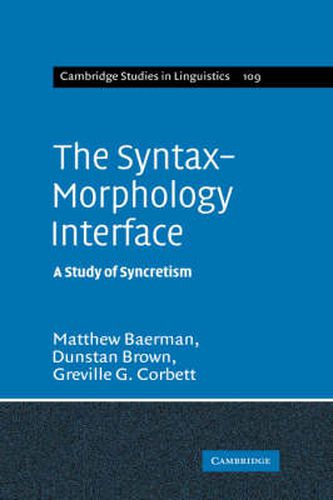Readings Newsletter
Become a Readings Member to make your shopping experience even easier.
Sign in or sign up for free!
You’re not far away from qualifying for FREE standard shipping within Australia
You’ve qualified for FREE standard shipping within Australia
The cart is loading…






Syncretism - where a single form serves two or more morphosyntactic functions - is a persistent problem at the syntax-morphology interface. It results from a ‘mismatch’, whereby the syntax of a language makes a particular distinction, but the morphology does not. This pioneering book provides the first full-length study of inflectional syncretism, presenting a typology of its occurrence across a wide range of languages. The implications of syncretism for the syntax-morphology interface have long been recognised: it argues either for an enriched model of feature structure (thereby preserving a direct link between function and form), or for the independence of morphological structure from syntactic structure. The Syntax-Morphology Interface argues for the autonomy of morphology, and the resulting analysis is illustrated in a series of formal case studies within network morphology. It will be welcomed by all linguists interested in the relation between words and the larger units of which they are a part.
$9.00 standard shipping within Australia
FREE standard shipping within Australia for orders over $100.00
Express & International shipping calculated at checkout
Syncretism - where a single form serves two or more morphosyntactic functions - is a persistent problem at the syntax-morphology interface. It results from a ‘mismatch’, whereby the syntax of a language makes a particular distinction, but the morphology does not. This pioneering book provides the first full-length study of inflectional syncretism, presenting a typology of its occurrence across a wide range of languages. The implications of syncretism for the syntax-morphology interface have long been recognised: it argues either for an enriched model of feature structure (thereby preserving a direct link between function and form), or for the independence of morphological structure from syntactic structure. The Syntax-Morphology Interface argues for the autonomy of morphology, and the resulting analysis is illustrated in a series of formal case studies within network morphology. It will be welcomed by all linguists interested in the relation between words and the larger units of which they are a part.